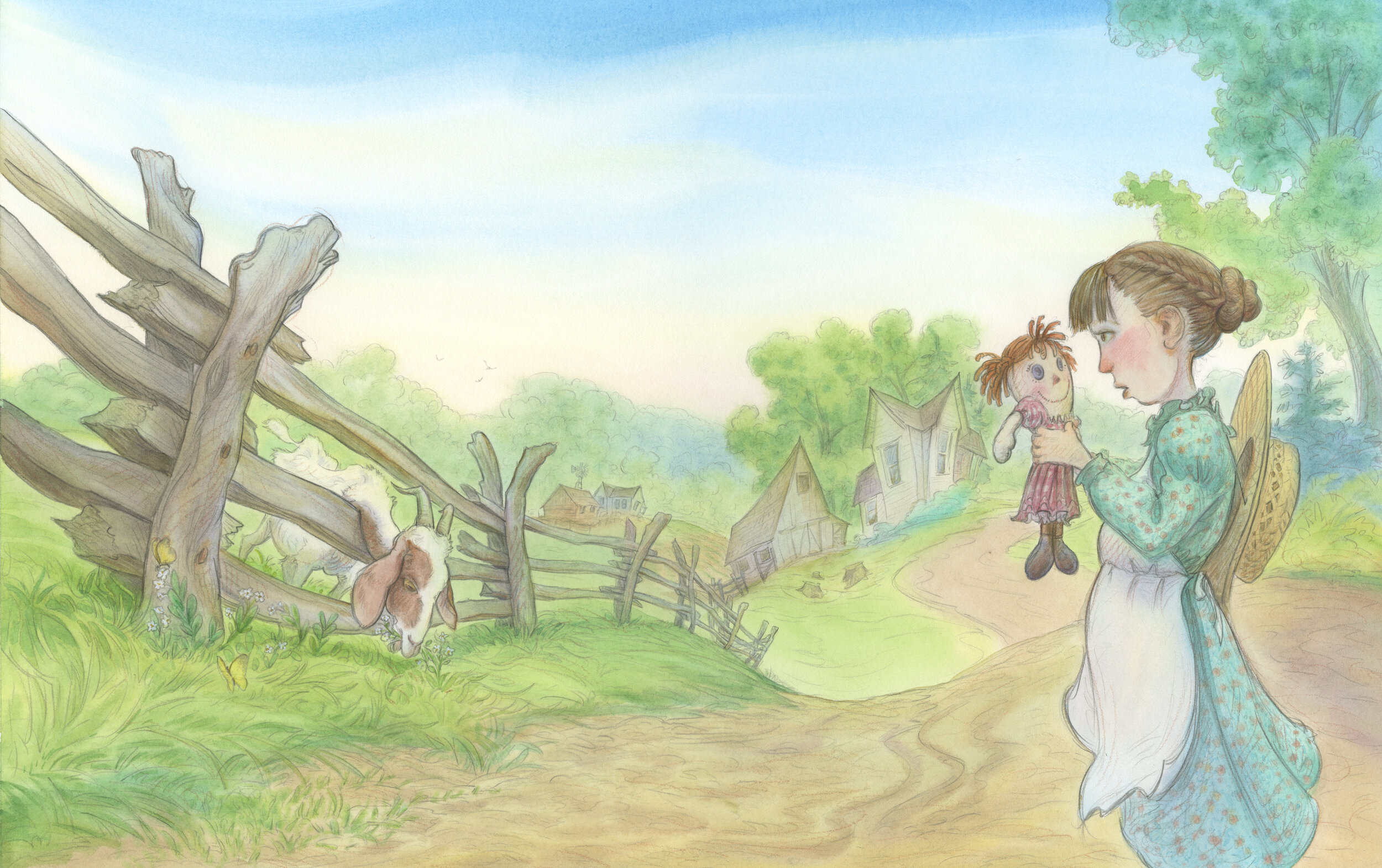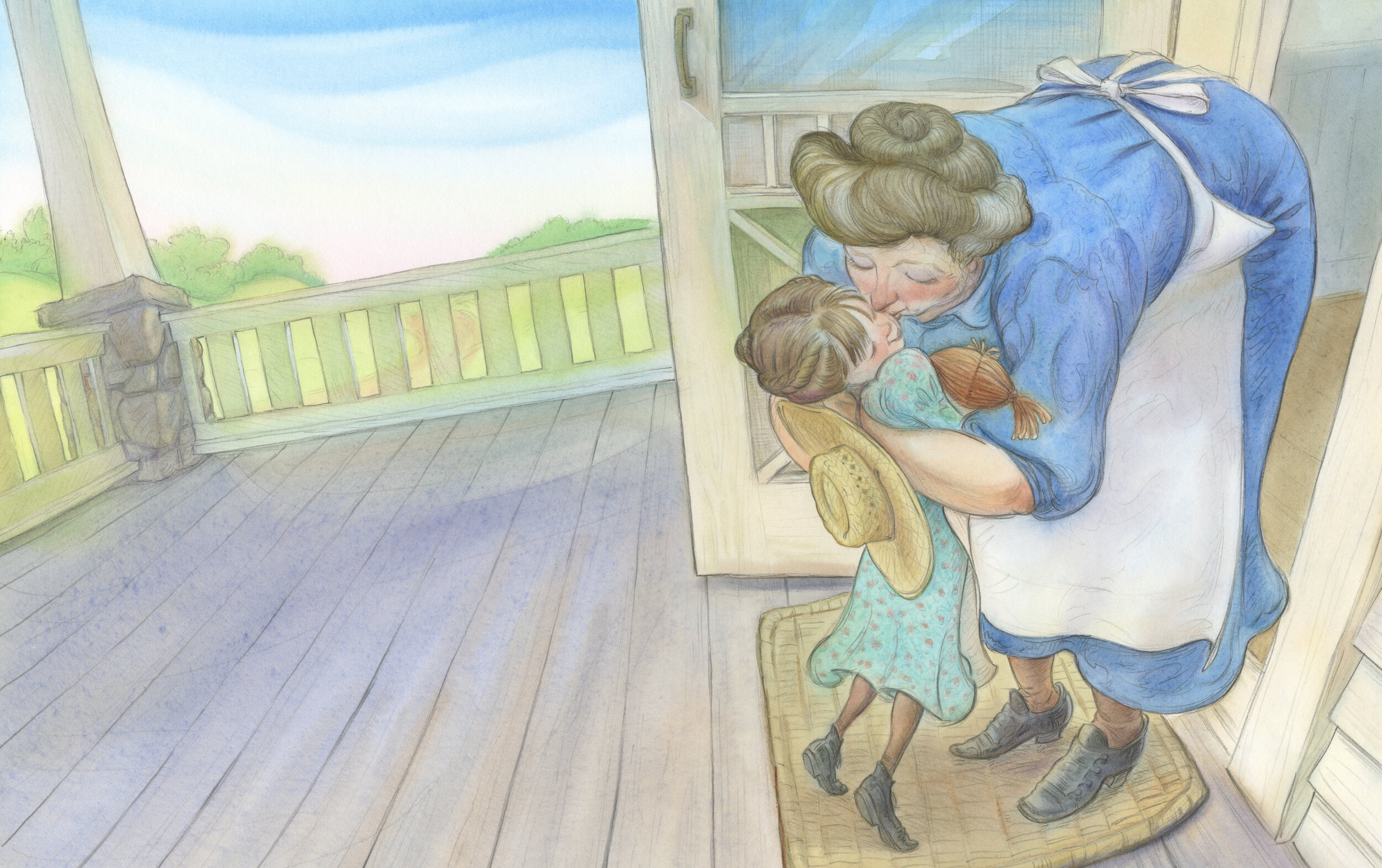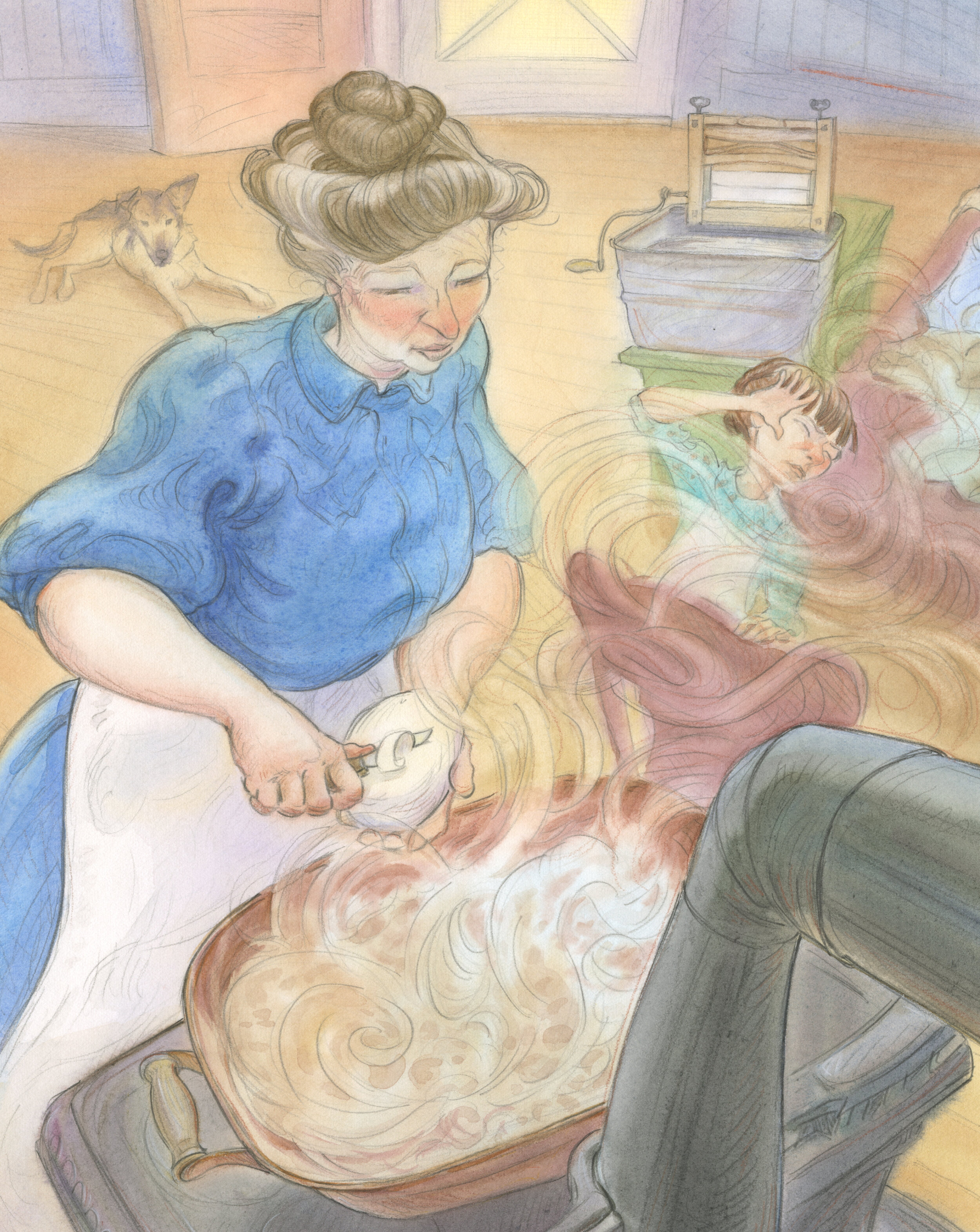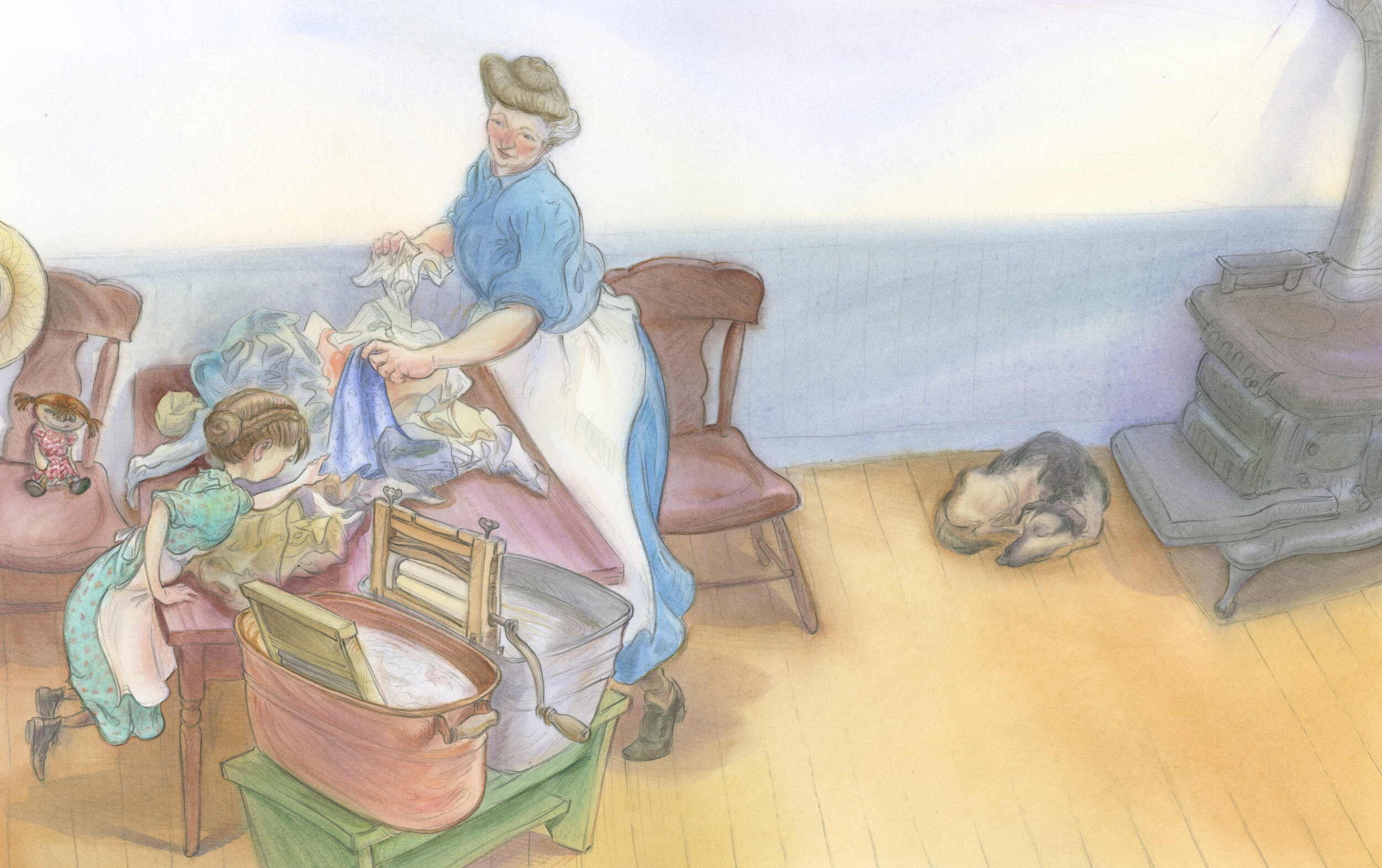Washday
It is washday.
“Are you ready for work, Lizzie girl?” Grandma asks.
“I am,” Lizzie says, and rolls up her sleeves. The water is boiling, and right now is no time to dwell on the doll tea party she is missing today.
Lizzie and Grandma haul the steaming washtub to the workbench. They shave the lye soap into the water. They rub, rub, rub the clothes over the washboard, pull them through the wringer, and hang them out to dry.
It is hard work, and Lizzie is tired. But the satisfaction of a job well done, an unexpected guest, and a loving gesture make Lizzie’s washday just about perfect.
Booklist- The title page of this charming historical picture book features an image of a monthly calendar with a single date circled, April 20, 1889: Washday. “‘Are you ready for work, Lizzie girl?’ Grandma asks me.” Lizzie is, even though she and her doll are disappointed that their plans for a tea party have been canceled. Lizzie is helping instead of her ma, who is home expecting a new baby. “‘Two strong women,’ Grandma says.” Indeed! Lizzie’s homey narration not only reveals the depth of family bonds and what it means to work together, but it also walks young readers through the labor-intensive process of doing laundry in days of yore. Children will be fascinated to find the instructions that inspired the story replicated on the back cover. Graceful pencil and watercolor illustrations include historically accurate details while the soft palette captures the warmth and love between the two workers. Lizzie’s efforts are rewarded when Grandma surprises her with “a real grown-up doll tea party.” Youngsters will savor this best with pearl tea and a snickerdoodle. —Jeanne McDermott
Kirkus- It’s washday. That doesn’t mean putting clothes in the washing machine and turning the knob or driving to the laundromat; it’s 1889, when it’s the old-fashioned way of getting clothes clean. Lizzie and her doll, Amelia Cordelia, walk to her grandmother’s house to help because her Ma is soon to have a baby. The work is hard: boiling water in a big copper kettle; adding shavings of lye soap; sorting the clothes by color (whites for Sunday “go-to-meeting” clothes); using the broom handle to lift the hot clothing into rinse water; putting them through the wringer; and drying them on the outdoor clothesline. Taking a break with a glass of buttermilk, Lizzie is sad thinking about the doll tea party she was supposed to have with her friend that day. Surprise! Grandma has set the table for a tea party with special dishes and doll-size snickerdoodles and places for her best friend and her doll. Bunting evokes a homespun experience with emotions and details that the pencil-and-watercolor illustrations adroitly augment. Sneed neither whitewashes nor prettifies the harshness of the time; Grandma is a robust woman with hair in a bun and a big nose. Historical details like hairstyles and sturdy black shoes combine with phrases like “Grandma’s dog…has the misery in his back” to make the story feel genuine. An appealing snapshot of rough-hewn life that might well make kids appreciate washing machines.
School Library Journal- Lizzie’s mother is pregnant and cannot help Grandmother with the wash as usual, so the young girl helps with the intensive chore. She’s happy to lend a hand, though missing a planned tea party with her friend Lucy and their dolls does give her a tinge of regret. A calendar on the title page places the story in April 1889, and the lengthy text gives readers an intimate look at the rigors of laundering in the time before washing machines. Lizzie and Grandmother boil water on the stove and carry it to a washbasin into which they shave homemade lye soap. They sort the clothes and scrub them on a washboard—whites first, colors and rags last. After the clothes are put through a hand wringer, they are hung on a line outdoors or placed on grass and bushes to dry. The large illustrations, created in watercolor and pencil, add a great deal to the scene. A close-up of the girl and grandparent in a welcoming embrace reveals the warm affection they share. Both Grandmother and Lizzie wear long dresses and high shoes and have old-fashioned hairdos. A black-iron stove stands out in the plain kitchen with its workbench and butter churn in the corner. Youngsters will be glad to learn that after a rest and a “thick and curdy” drink of buttermilk, Lizzie gets a surprise visitor and a tea party after all. A fine addition to a social studies unit. –Marianne Saccardi, formerly at Norwalk Community College, CT




